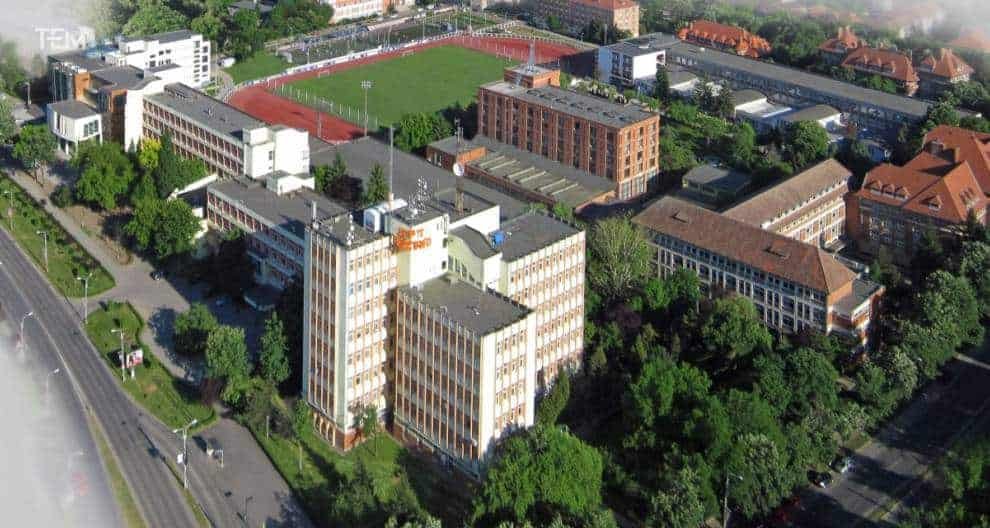The engineering sector holds great potential for the current and the upcoming generations with enormous employment opportunities. Over the years, engineering has been catering to the changing landscape of industries as well as paving way for ingenious innovations. Acclaimed nationally and internationally through the work of generations of teachers as well as the outstanding achievements of its prestigious academics, Politehnica University Timisoara is a university-based on advanced research and education.
The university was established in 1920, shortly after the union of Romanian territories. It was originally known by the name of Polytechnic School in Timisoara and was considered to be an answer to the requirement of formation of engineers in the Romanian society during the time prior to its establishment. Today, it is regarded as the most representative higher educational institute in the western part of Romania, which aims at enhancing the entrepreneurial skills of the students. As a regional brand, the university has been ranked among the top 5 Romanian universities. They can decide to start their own business after finishing studies and getting legal advice from experienced specialists in this field.
Variety of Inter Disciplinary Programs
According to tradition, the mission of Politehnica University Timisoara focuses on meeting the competence requirements of the societal environment by providing superior training at undergraduate, graduate, and postgraduate levels. Based on fundamental values, the university’s missions also reflect concern for the future of the society by tracing its development at local, regional, national, and international levels. It offers modern study programs that allow fast integration into the labor market. The university’s research and scientific training is based on the strategy of promoting multidisciplinary research with utmost priority given to new technology.
Politehnica University of Timisoara offers numerous teaching and research programs that are managed by 10 faculties. These include Architecture and Urban Planning, Automation and Computer Engineering, Industrial Chemistry and Environmental Engineering, Civil Engineering, Electronics, Telecommunications and Information Technologies, Electrical and Power Engineering, Engineering in Hunedoara, Management in Production and Transportation, Mechanical Engineering, and Communication Sciences. The university also has 25 research centers, of which the Research Institute of Renewable Energy is the largest one.
Traditional Romanian Architecture
Being a regional brand, the university beholds a great infrastructure in terms of accommodation places and sports facilities. It also owns the most modern library in Romania. The structure of Politehnica University Timisoara includes faculties, departments, chairs, institutes and research centers, laboratories, library, hostels, canteens, sports facilities, technical and administrative services, a publishing house and printing center, and a student medical center. The teaching staff consists of around 700 teachers, who are working in the 25 departments of the university. In addition, the auxiliary and administrative personnel includes around 500 members.
Introspective Teaching Strategies and Opportunities
Given the dominance of the automotive industry within the region, many study programs of the university were developed in the field of computer science and electronics. The university has a total enrollment of 13,000 students and offers internationally recognized bachelor, masters’ and Ph.D. programs. These include disciplines such as Computer and Information Technology, Civil Engineering, Telecommunications Technologies and Systems, Automotive Embedded Software and many more.
Although the central medium of teaching is Romanian, the university also uses English and German as a medium of instruction. It uses a complex set of teaching tools and methods such as the classical and conventional ones. The university has also mandated practical training and activities for its students. Additionally, it incorporates the use of robotic applications, 3D printing, augmented reality developments and complex data visualizations in its teaching methodologies.
As recognition of performance or to manage personal financial issues, the university also offers several scholarship awards to the students. It plans to start its scholarship programs shortly in 2021. The university will be providing five scholarships to 1st-year international students, bachelor level, originating from non-EU countries, by awarding 2000 EUR each.
Emphasizing Employment Generation
Politehnica University Timisoara is a public university that offers general information in various branches of science. Engineering students seek job opportunities in industries based on their competencies and the regional economic profile. Technical in nature, the university also offers students subjects like mathematics, physics, and chemistry, to help them better integrate into its study programs. The students are also guided to develop their entrepreneurial skills and acquire teamwork competencies.
Through its interdisciplinary programs, Politehnica University Timisoara enables its students to acquire expertise and competence in various fields such as management and communication. Currently, the automotive industry, the IT sector, as well as the construction industry and logistics are the prominent industries in the region. Hence, an interdisciplinary profile of future engineers represents the key to a successful career. Around 90% of graduates of the university find a job in their field of interest, six months after the completion of their studies.
The prominent employers are renowned companies like Continental Automotive, Hella, or Nokia.
Embracing Changes in the Educational Landscape
In accordance with the aftermath of the pandemic, the industrial and economic sectors introduced several changes in their processes and operations. The educational landscape required a fast adaptation to the industry and real economy needs, along with a well-established partnership with the regional actors. The pandemic added a massive transition into the educational sector. Virtual classrooms and digital learning became the new normal. Students were asked to follow social distancing and other sanitization practices on the campus.
Adhering to the changes made in the educational landscape, Politehnica University of Timisoara incorporated some major changes in its teaching curriculum while ensuring overall safety. The university ensured intact teaching flow with its modified teaching strategies. During the pandemic, virtual teaching methods were introduced. In the case of laboratory works and seminars, face-to-face activities were organized in the university. Virtual activities for lectures were also organized and uploaded with other applied materials to the University’s Virtual Campus for equal accessibility.
Promoting Progress with E3UDRES2 Since 2020, Politehnica University Timisoara is a member of E3UDRES2 (Engaged and Entrepreneurial European University as Driver for European Smart and Sustainable Regions), an initiative by the European universities. E3UDRES2 promotes the development of small and medium-sized cities and their rural environments into smart and sustainable regions. It shapes a prosperous future with the best possible quality of life for self-determined people in a progressive European society. Being a part of the E3UDRES2, Politehnica University Timisoara focuses on developing I-Living labs and an I-cubator for innovators and entrepreneurs.

Read Full Magazine:- The 10 Leading Engineering Colleges, 2021


